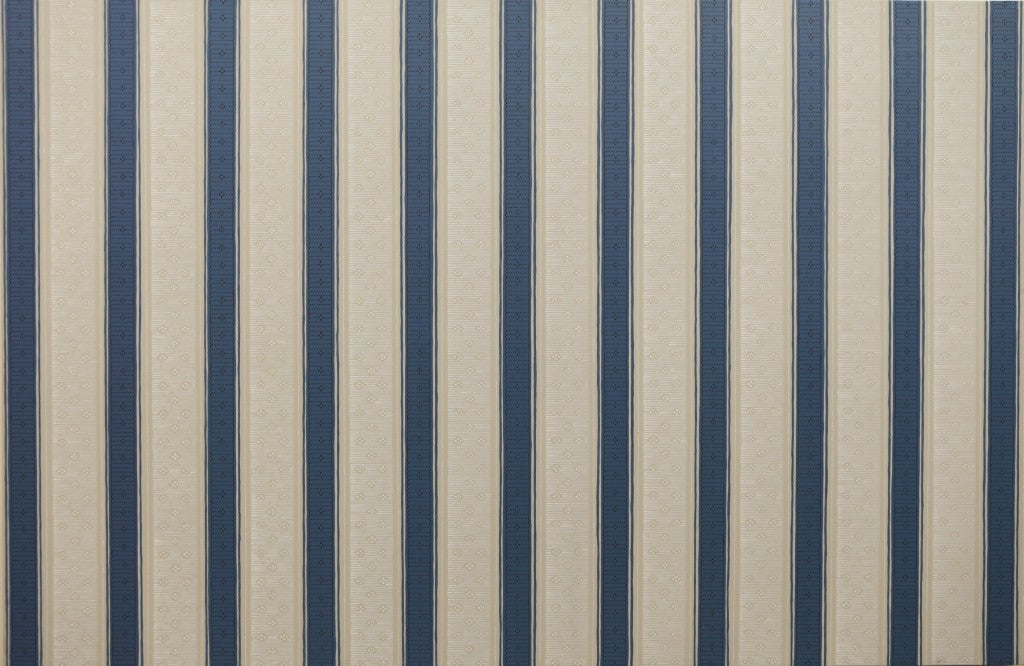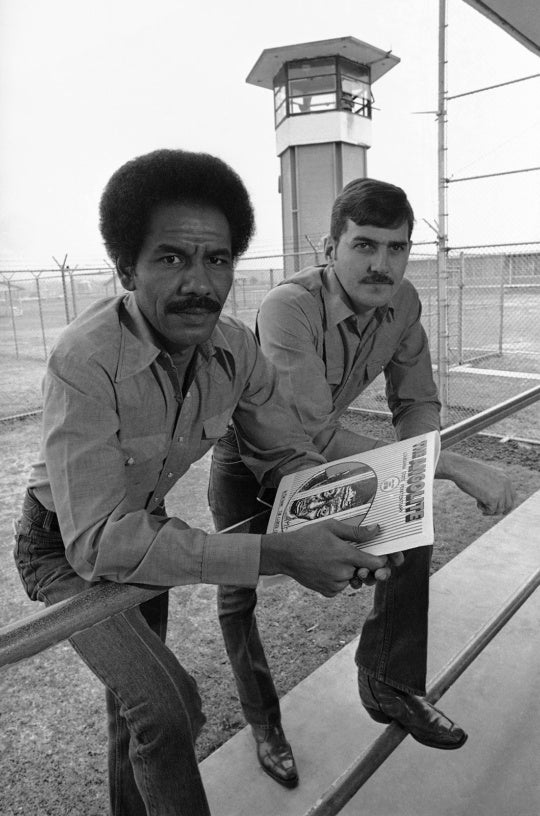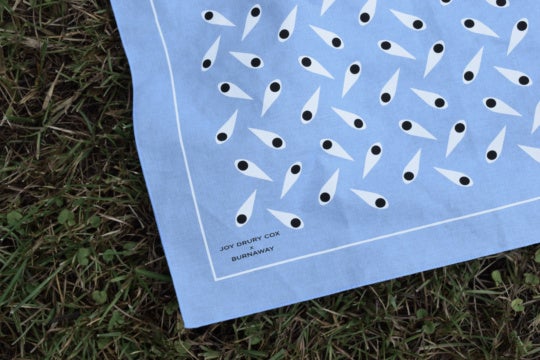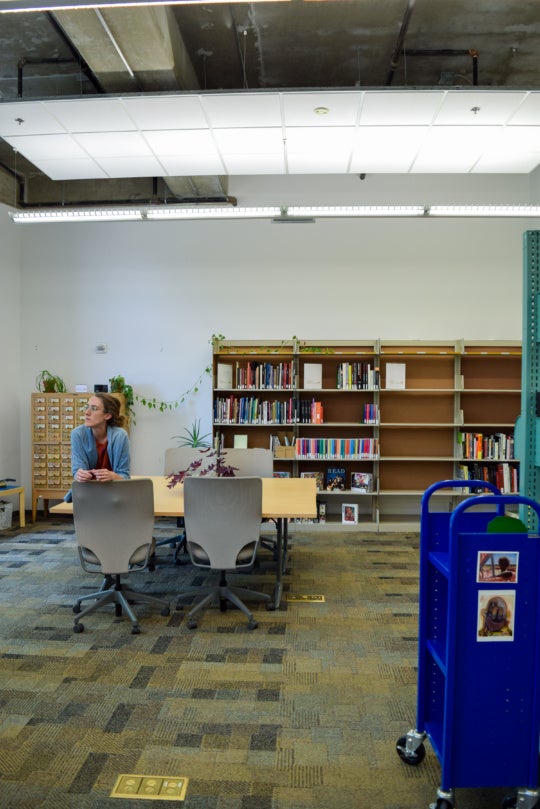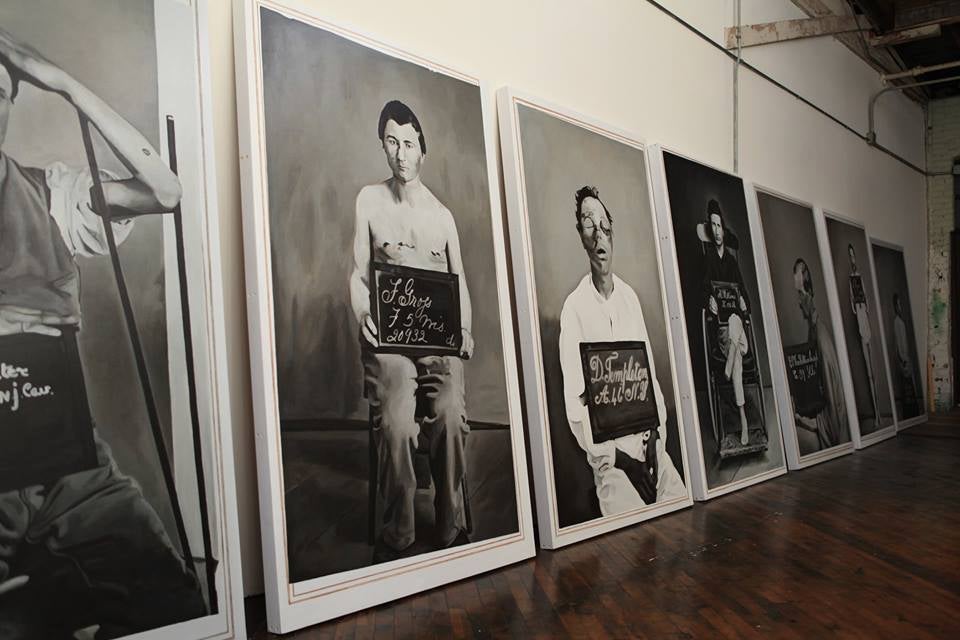
Dane Carder’s show “War Wounds” contains primarily large-scale paintings of American Civil War soldiers wounded, often grotesquely, in battle. Their source images are photographs taken by surgeon Dr. Reed Bontecou, who was director of the Harewood Hospital on the outskirts of Washington, DC. Dramatically enhanced by the choice of black exhibition walls, the series of soldier paintings, along with a smaller series of wallpaper designs, forms a broader dialogue, remarking on concepts of loss, the history of the Civil War, and the evidence of war on individual and social bodies.
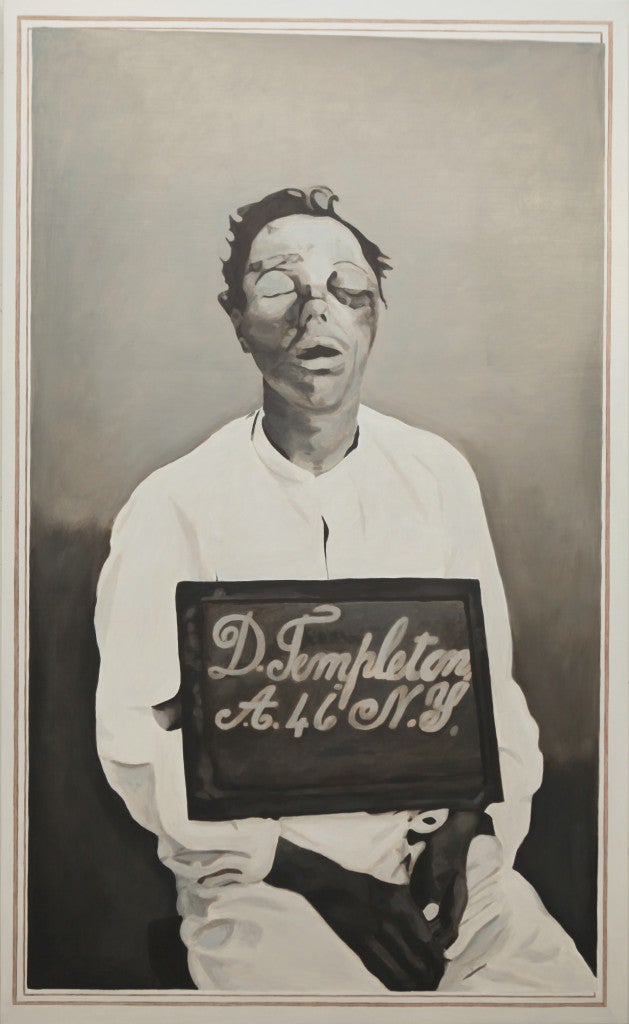
The large-scale portraits of soldiers, painted in acrylic, seem both life-size and monumental. A single reference photograph is included on each wall label, providing visual information for the work’s influence and sparking a curiosity about the soldiers depicted, who are simply described with a litany of their injuries and physical state at their time of discharge. Bontecou’s photography served a purely documentary purpose, recording the amputations and wounds of the men. As the photos were intended for clinical teaching tools and to provide veterans with proof of the extent of their injuries when making pension claims, the paintings are likewise simple and straightforward—the men sit with functional props, such as cards listing their names and military companies and furniture that helped to display the men’s injuries while allowing them to sit for the lengthy exposure. The portraits are restrained, letting the images speak for themselves. Carder remains largely true to this principle, choosing a muted palette and letting the stark background and subtle light shifts create a sense of drama. In this aspect, magnified through Carder’s lens, the silent figures seem all the more honest and authentic despite straddling the line between photographic reality and painterly license.
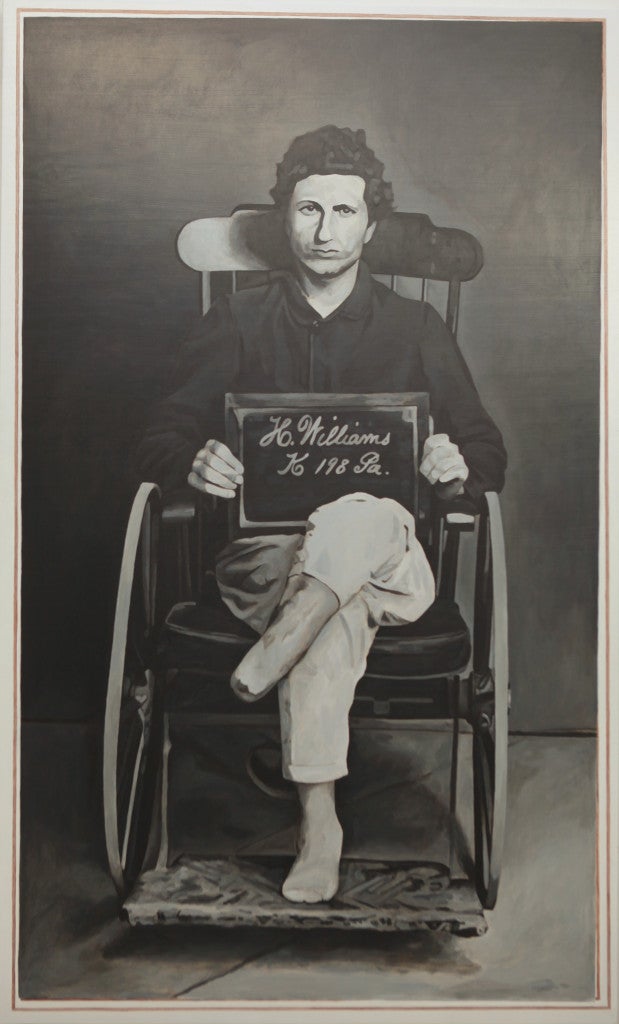
The men’s expressions range from confusion to defiance, from solemnity and peace to irreparably sad; the hunch of shoulders or a lifted brow bestow them with emotional significance and burden. Carder’s brushwork enhances this quality; from a distance the figures appear present and solid, but up close the faces are loose and soft, areas of clarity matched by suggestive marks and shapes. Carder’s painting is often a series of washes, their thin nature allowing the luminescence of the sepia underpainting to rise, creating a faint glow of light. The result is an ethereal, ghostly quality. It’s a poetic restriction that shows Carder’s calculated and deliberate mark-making in paintings otherwise involved with the photographic remnant.
In addition to the series of soldiers, “War Wounds” includes four hand-painted replicas of wallpaper designs popular in 1863. Titled with women’s names, their vibrant patterning against the black walls provides a marked contrast to the somber, monochromatic figures. However, in the context of the wounded men, and with the inclusion of a single love letter written from a deceased soldier to the “Sarah” the painting is named for, they contain a sense of sorrow and exude a quiet intensity within the space. As with the figures, the wallpaper patterns appear restrained from a distance, even emotionally cold, but up close they reveal a humanity of imperfections in their organic brushstrokes and varying degrees of cohesion, as if depicting individual responses to grief.
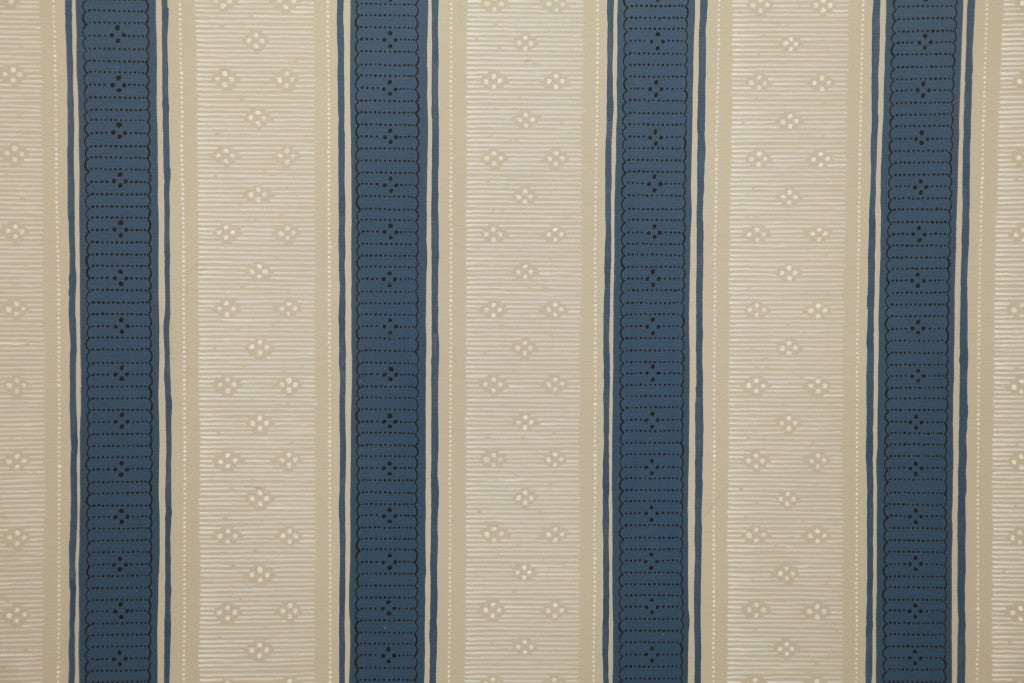
Most striking of the wallpaper pieces is Marie, a painted pattern of over a thousand dots no larger than freckles, whose broken surface recedes into a larger impression of stripes as the viewer steps back. It is an obsessive, restrained piece with remarkable tension, something so demure that shouts from the wall. Though it contains no visible wounds or soldiers, Marie becomes an apt metaphor for the aftermath of war—the intense and deliberate act of reconstruction—as a constrained and individualized experience affecting all levels of humanity, humming in the background of our everyday life.
“War Wounds” is on view through May 31 at the Parthenon in Nashville’s Centennial Park.
M Kelley is a Nashville-based creative, an advocate for dialogue in contemporary art, an active contributor to a variety of diverse publications and arts initiatives. Kelley curates for the project space 40AU and the collective HAUS Rotations. Hir social practice revolves around a fascination with the complexities of communication and narrative; providing educational and developmental opportunities; and inviting others into collaboration through studiOmnivorous.com.
